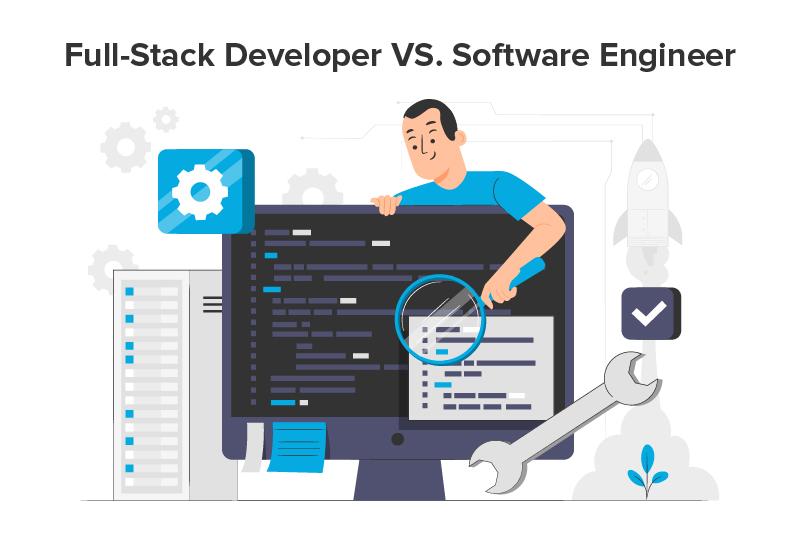Finding the Ideal Software Development Partner for Innovative Solutions
Wiki Article
Committed Developers vs. In-House Teams: Which Is Right for You?
The decision in between making use of specialized programmers and keeping an in-house group is a considerable one that can affect the trajectory of your jobs and general company approach. Devoted programmers give a level of adaptability and specialized proficiency that can be beneficial for particular, temporary campaigns. On the other hand, internal teams add to a cohesive business culture and a nuanced understanding of lasting goals. By checking out critical variables such as budget, job extent, and preferred control, you can better figure out which strategy aligns with your business requirements. Nonetheless, the implications of this option extend past instant end results-- think about the more comprehensive impact on your service landscape.Recognizing Committed Developers
The growing need for specialized abilities in the technology industry has actually brought about the emergence of devoted designers as a feasible option for lots of organizations. These professionals are usually acquired on a task basis, allowing companies to utilize details proficiency without the long-lasting dedication related to full time hires. Devoted developers are usually embedded within a customer's group, providing adaptability and scalability to satisfy job demands.This design allows organizations to access a worldwide ability swimming pool, which is particularly beneficial in a rapidly progressing technological landscape. Dedicated designers can be sourced from numerous geographical locations, making sure that companies can find the appropriate ability established at competitive prices. They commonly bring a riches of experience and knowledge, having actually dealt with varied tasks across different industries.
Moreover, committed designers can focus solely on the jobs available, boosting efficiency and performance. They are outfitted to integrate perfectly into existing process, working together very closely with in-house groups to achieve task objectives. This strategy not only lowers the burden of recruitment and training yet likewise permits organizations to stay agile, adapting quickly to altering market needs and technological advancements.
Advantages of In-House Teams

In addition, in-house groups tend to have a much deeper understanding of the firm's mission, values, and objectives. This positioning can boost employee involvement and inspiration, as employee feel a lot more attached to their job and the organization's success. In addition, having a dedicated internal team permits much better positioning of techniques and objectives, as these members are consistently concentrated on the firm's priorities.
In-house groups additionally facilitate quicker decision-making processes, as they can respond a lot more swiftly to adjustments and obstacles. The established partnerships and knowledge with company procedures enable structured operations and reduced miscommunication. Ultimately, the combination of a cohesive culture, positioning with business objectives, and effective communication makes in-house teams a useful asset for many organizations, particularly those looking to cultivate long-lasting growth and development.
Expense Factors To Consider
When reviewing expense factors to consider, both in-house groups and committed programmers existing unique monetary effects for companies. Engaging devoted developers generally includes a pay-per-project or hourly rate model, which can be cost-efficient for businesses with fluctuating task needs. This method permits flexibility in scaling sources up or down, making certain that business just spend for the services they require.On the other hand, in-house groups involve repaired expenses, including salaries, advantages, and overhead costs such as office room and devices. While this design supplies higher control and prompt accessibility of sources, it may lead to greater long-term expenditures, especially if the work does not warrant a full-time staff.
Moreover, business need to take into consideration the hidden expenses connected with recruitment and training of in-house workers, which can further strain spending plans. Sometimes, the time and resources invested on taking care of an in-house team can interfere with the organization's core organization objectives.

Job Monitoring and Versatility
Task monitoring and flexibility are vital elements that affect the software development staff augmentation selection in between in-house teams and devoted designers. Devoted teams commonly have actually developed procedures for managing projects efficiently, leveraging particular approaches like Agile or Scrum, which promote repetitive progression and flexibility.
Ultimately, the option between devoted developers and internal teams hinges on the desired degree of adaptability and the certain project monitoring needs. Business need to assess their functional characteristics, job complexity, and resource schedule to establish which option lines up ideal with their critical purposes.
Making the Right Choice
Selecting the best growth approach-- in-house teams or specialized designers-- needs a cautious evaluation of different factors that line up with a company's calculated objectives. Conversely, in-house teams can supply far better continuity and integration with existing employees.Next, examine your spending plan. Committed programmers typically offer an affordable solution for short-term tasks, while internal teams may incur higher lasting costs due to salaries, benefits, and overhead costs. Examine the degree of control and cooperation wanted; in-house teams usually foster stronger communication and positioning with firm culture.
Furthermore, think about the moment structure. If immediate results are necessary, dedicated developers can be onboarded rapidly, whereas constructing an internal group takes time for employment and training. Weigh the long-term vision of your company. If continuous development is important, purchasing an in-house group might generate better returns gradually. Ultimately, the choice pivots on a thorough evaluation of these factors, ensuring alignment with your firm's functional needs and overall purposes.
Final Thought
To conclude, the choice between in-house teams and committed developers rests on job requirements and business purposes. Committed developers supply versatility and customized proficiency, making them suitable for short-term campaigns. On the other hand, in-house groups grow a natural culture and much deeper placement with long-lasting goals. Cautious evaluation of budget plan restraints, task timelines, and wanted control degrees is important for figuring out one of the most appropriate approach, making sure alignment with critical priorities and operational efficiency.The choice between making use of committed designers and keeping an internal group is a significant one that can affect the trajectory of your projects and general organization technique.Task monitoring and versatility are critical aspects that affect the option between specialized programmers and internal groups. software development staff augmentation.In contrast, internal groups might stand out in keeping a consistent task monitoring structure due to their experience with the organization's culture and lasting objectives. Devoted programmers frequently offer an economical option for temporary jobs, while internal groups might incur greater long-lasting costs due to salaries, advantages, and overhead costs.In verdict, the decision between internal groups and dedicated developers pivots on project demands and organizational goals
Report this wiki page